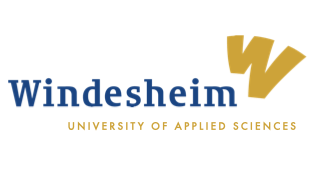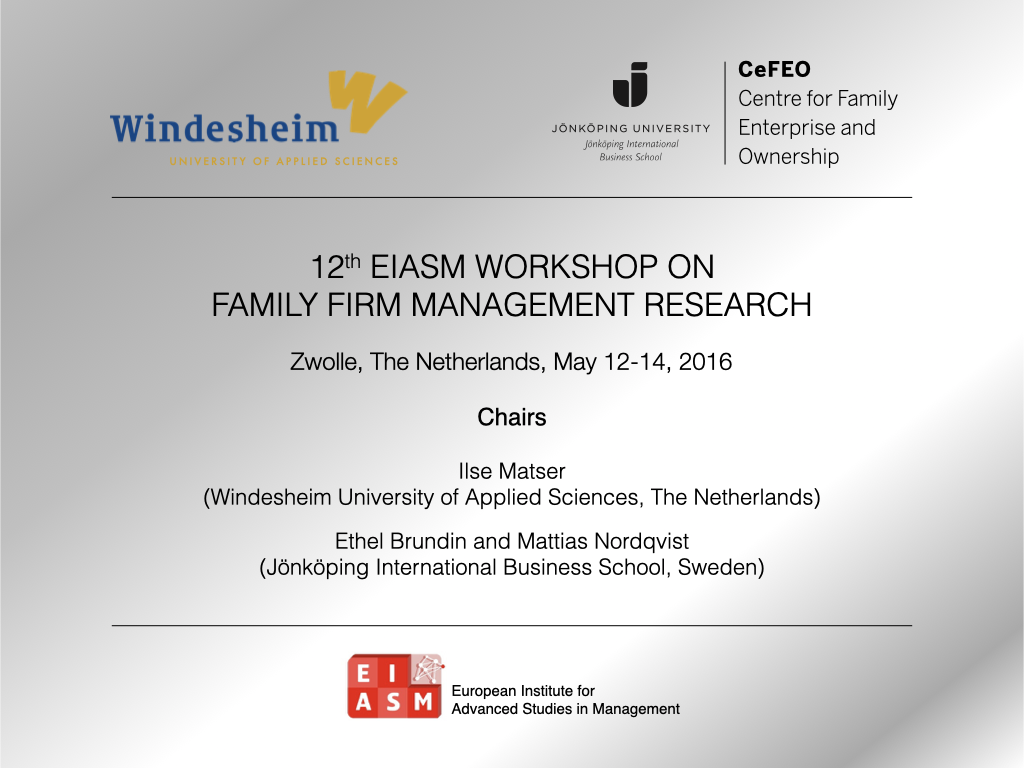12th EIASM Workshop on Family Firm Management Research
Zwolle, The Netherlands – May 13-14, 2017
Bridging the gap – Integrating family business theories and practice
Chairs
Ilse Matser
Windesheim University of Applied Sciences, Zwolle, The Netherlands
Ethel Brundin and Mattias Nordqvist
CeFEO, Jönköping International Business School, Sweden
Keynote Speakers
Peter Jaskiewicz PhD
Concordia University Montreal, Montréal · John Molson School of Business
Georges Romme
Eindhoven University of Technology

Co-organizer
Windesheim University of Applied Sciences
Zwolle, The Netherlands
Call for papers
Family business research has demonstrated great advancements over the last decades, yet many challenges remain to be solved. One of those challenges is the gap between theory and practice. Research has been largely deduced or has assumed human action from findings on macro and meso levels of economic and sociological inquiry (Johnson, Langley, Melin, & Whittington, 2007). Micro lenses are however little used. “Strategies are theorized as somehow disembodied” (Johnson et al., 2007). Additionally, there is a need to translate theoretical concepts such as family social capital and socio-emotional wealth into a useful vocabulary for practitioners. It is also important that the demographics of the business population are better represented in our research efforts by more focus on small and medium sized businesses. One important challenge in family business research is therefore to address the gap between theory and practice by moving theory to practice and vice versa.
Different approaches to address the gap between theory and practice can be identified, including for example the design-based research approach which is used in entrepreneurship research (Van Burg & Romme, 2014). This approach works towards research synthesis (by combining findings and contributions from different research traditions) in terms of outcome patterns, social mechanisms and contextual conditions. Another approach is the engaged scholarship perspective (Van de Ven, 2007), which argues for collaboration and engagement with practitioners to help recognize our blind sights. Given their different perspectives and roles, practitioners can contribute by identifying problems, models, designs and potential solutions. The idea is not to agree with each other’s point of view, but to be knowledgeable about them.
Examples of questions to be addressed are how to bridge the gap(s) between theories and practices of family business management, how does theory influence family business management practice and does the same apply in reverse, can the theory be ‘real’, how do we apply high level theory to practice and how effective is the ‘transfer’ to the level of management practice? What are, could, or should be the results and outcomes at business, family and owner level?
In this 12th EIASM Family Firm Research workshop we invite you to engage in the theme ‘bridging the gap – integrating family business theory and practice’. We welcome a broad range of ideas including, but not restricted to:
- Evidence based family entrepreneurship
- Application of theory by business families
- Application of theory by family business advisors
- Overview of research methods for doing applied research in the family business context
- New concepts for doing applied research in the family business context
- Overview of urgent questions that practitioners seek answers to
- Guiding principles in doing applied research in family business context
- When doing research becomes an intervention in the family business
While submission of papers related to the main theme are particularly encouraged, the workshop continues its tradition to accept papers relevant to any area of family firm management and which add value to the development of the family business research field.
Read more here.


